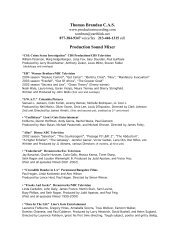Be prepared - do double system. - Production Recording
Be prepared - do double system. - Production Recording
Be prepared - do double system. - Production Recording
Create successful ePaper yourself
Turn your PDF publications into a flip-book with our unique Google optimized e-Paper software.
frames (60 fields) of video in the same second that 24 film frames were<br />
exposed originally. The 3 and 2 refer to the process where one film frame<br />
is transferred to 2 video fields and the next film frame is transferred to 3<br />
video fields. This process adds the 12 additional fields (6 frames) needed<br />
to make 30 out of 24.<br />
This is how ARRI shows it schematically on their website<br />
www.arri.com/info<strong>do</strong>wn/cam/ti/p-1008.pdf The 4 film frames are called<br />
ABCD the corresponding video frames A1,A2,B1,B2,B3, etc.<br />
So far so good. Now you have 30 frame video from 24 frame film.<br />
Now this is slowed by 0.1% to compensate for color video's real speed of<br />
59.97 Fr/Sec. Sound follows this slow-<strong>do</strong>wn (“pull-<strong>do</strong>wn”) of 0.1% to<br />
59.97. (Standard color rate since the 1950’s!) These are 2 different<br />
concepts, but they are what they are and they happen simultaneously.<br />
In telecine transfer, the colorist parks the picture on an easy to read<br />
timecode number. The number is then punched in the telecine computer<br />
and all is automatic from then on. It is here where the sound playback<br />
machine (¼ inch or DAT) needs the 10 or so seconds to come up to<br />
perfect video speed. Videotape dailies get a new TC starting with 1:00:00<br />
at tape roll 1. An EDL is kept to track original location TC, film negative<br />
footage (keycode), and the new telecine TC. An EDL (edit decision list) is<br />
a database file on a computer disk that accompanies the video tape from<br />
then on and is imported in the editing computer. This computer keeps<br />
track of telecine TC and location TC. The cut list with both these TCs is<br />
sent to the sound editor who can use this data to refer back to location<br />
audio material and replace or augment easily. That is the whole idea of TC<br />
on the original recording on the set. Nowadays the editors are under<br />
heavy time pressure so they want audio on a Disk that is even faster to<br />
access than DAT tapes. With cheaper storage often editors load all audio<br />
into the editing computers and keep it with the cut picture on the same<br />
hardisks for even faster access. This is also very well explained by<br />
http://www.editorsguild.com/newsletter/Updates96/tipfieldsframes.html .<br />
Common pitfalls<br />
• No slates.<br />
• Hard to read timecode numbers on slates (poor focus, glare, too short<br />
in duration, upside <strong>do</strong>wn, overexposure).<br />
• Not enough pre-roll on sound (need 10 sec. for safety with TOD). –<br />
This is a big topic that will be explored further. DAT decks need 4-10<br />
sec. of preroll to this day (2001).<br />
A Note from Tim Bond on the Telecine<br />
Users Group I was at NAB97<br />
Instasync is O.K. for Aaton stuff but not practical yet for smart slate. ”It<br />
<strong>do</strong>esn't seem as though it offers that much more of an advantage over


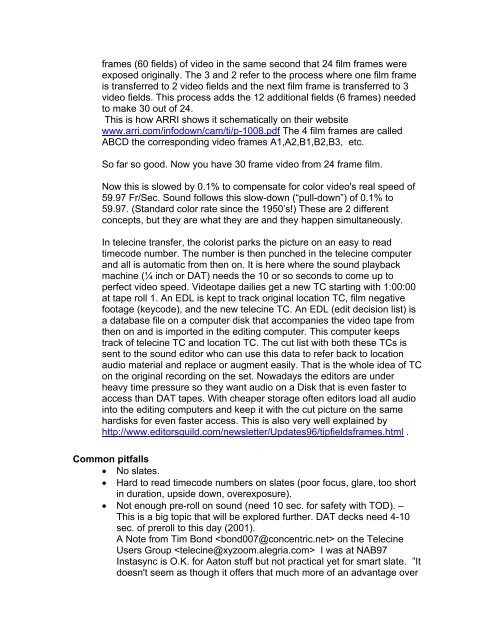
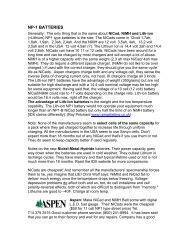
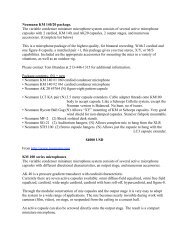
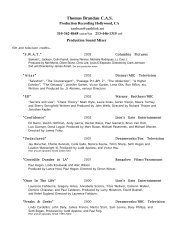
![[Wolf Seeberg on NP-1 Batteries] - Production Recording](https://img.yumpu.com/24136891/1/190x245/wolf-seeberg-on-np-1-batteries-production-recording.jpg?quality=85)
